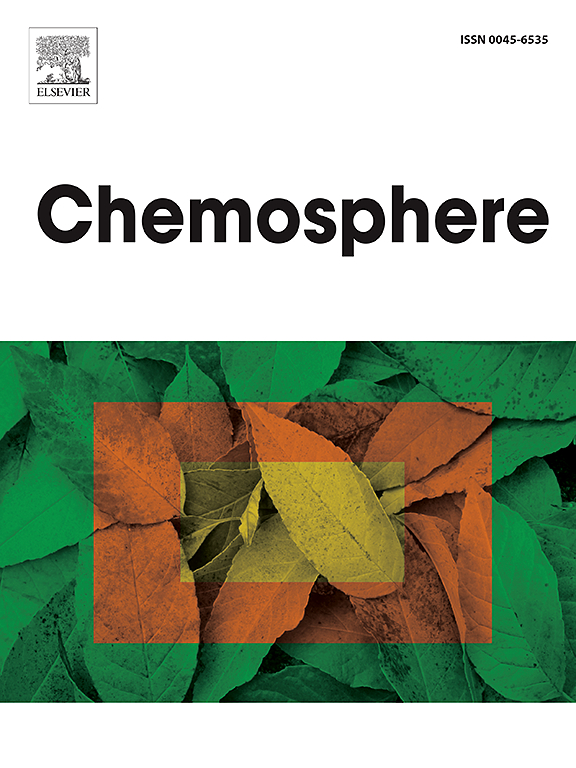The potential for atmospheric transport of contaminants to remote lakes: An assessment using COSMO-RS solvation theory
IF 8.1
2区 环境科学与生态学
Q1 ENVIRONMENTAL SCIENCES
引用次数: 0
Abstract
Pharmaceuticals and personal-care products (PPCPs), pesticides, and per-and polyfluoroalkyl substances (PFAS) have been detected in lakes far from known point sources. These compounds may be transported into the atmosphere in the gas phase or associated with aerosols or particulates. Here, the CONductor-like Screening MOdel for Realistic Solvation (COSMO-RS) theory is used to estimate key partition ratios for selected chemicals from these classes and used to map their tendency to partition within the atmosphere under typical conditions. In cloud-free conditions, the target chemicals partition to one or more of the organic or aqueous phases of aerosols and the gaseous phase in air. Changing the pH of aerosols in the range 0–7 results in most chemicals shifting from one phase to another. Most acids and bases shift strongly to the water phase under ionizing conditions (i.e., pH 0 for bases and pH 7 for acids. Adjustments to the modelling for an increased volume in the water phase and changes in the pH of aerosols under cloudy conditions results in the prediction that most of these chemicals will partition into water droplets (i.e. rain) at some pH value between 0 and 7. It is proposed that wastewater treatment plants are point sources for PPCPs and possibly PFAS, while agricultural applications are the source of pesticides. Partitioning into the atmosphere and medium- or long-range transport, followed by wet deposition or direct diffusion could explain the presence of many of these chemicals in remote lakes.

大气向偏远湖泊输送污染物的可能性:使用cosmos - rs溶剂化理论的评估
在远离已知点源的湖泊中发现了药品和个人护理产品(PPCPs)、农药以及全氟烷基和多氟烷基物质(PFAS)。这些化合物可能以气相形式被输送到大气中,或与气溶胶或微粒相结合。在这里,实际溶剂化的类导体筛选模型(cosmos - rs)理论用于估计这些类别中选定化学物质的关键分配比,并用于绘制它们在典型条件下在大气中分配的趋势。在无云的条件下,目标化学物质分解为气溶胶的一种或多种有机相或水相和空气中的气相。在0-7范围内改变气溶胶的pH值会导致大多数化学物质从一种相转变为另一种相。大多数酸和碱在电离条件下(即碱的pH为0,酸的pH为7)强烈地向水相转移。根据多云条件下气溶胶的pH值变化和水相体积的增加对模型进行调整,结果预测这些化学物质中的大多数将在pH值0到7之间的某个地方分解成水滴(即雨)。提出废水处理厂是ppcp的点源,也可能是PFAS,而农业应用是农药的来源。这些化学物质被分解到大气中,进行中长距离的迁移,然后是湿沉积或直接扩散,这可以解释这些化学物质在偏远湖泊中的存在。
本文章由计算机程序翻译,如有差异,请以英文原文为准。
求助全文
约1分钟内获得全文
求助全文
来源期刊

Chemosphere
环境科学-环境科学
CiteScore
15.80
自引率
8.00%
发文量
4975
审稿时长
3.4 months
期刊介绍:
Chemosphere, being an international multidisciplinary journal, is dedicated to publishing original communications and review articles on chemicals in the environment. The scope covers a wide range of topics, including the identification, quantification, behavior, fate, toxicology, treatment, and remediation of chemicals in the bio-, hydro-, litho-, and atmosphere, ensuring the broad dissemination of research in this field.
 求助内容:
求助内容: 应助结果提醒方式:
应助结果提醒方式:


